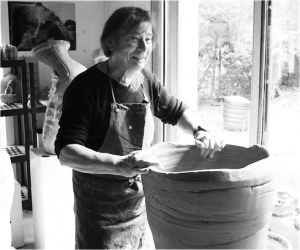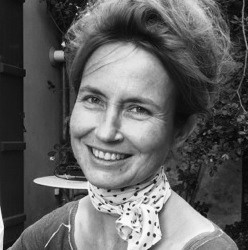Meeting Loul Combres
|
Ceramic artist and specialist in public FIRE ART performances, Loul Combres is a French member of the IAC who has represented and supported our institution at the UNESCO for over 18 years. In October 2014 he will resign from this position. It’s the occasion to thank him greatly for his enduring dedication and to hear about his achievements in the past now that his mission comes to an end:
Dear Loul. How did you become the representative of the IAC at the UNESCO in 1996? In these days the IAC representative, Jacques Blin, retired from his position as the President of the “Ateliers d’Arts de France” (AFF) and was therefore released from his role at the UNESCO. As I had met Marie Thérèse Coullery and Rudolf Schnyder, former IAC General Secretary and President at previous General Assemblies, they knew me and my performances in relation to “architecture and clay” I had presented in France on several occasions. They asked me if I wanted to succeed him.
What was the situation at the UNESCO then? Since 1958 the year of the IACs’ affiliation, relations had been already established but with the UNESCO introducing new directives for NGO’s in 1995 and time passing by, the cooperation had weakened.
How was the working atmosphere then? In those days meeting with the officers was much easier as the organisation worked in a more familiar and very personal way. I had the chance to meet for example with the former responsible for the ‘Section of Culture and Creative Industries for Development’, Mr Indrasen Vencatachellum, who became one of my dear contacts. He warned me about the fragile position of the IAC threatened to loose its UNESCO status already having become “informal”. In order to strengthen the operational relations, I proposed to re-establish a true cooperation in a timeframe of 2 years.
What were the difficulties in the cooperation with the UNESCO? It was very difficult to find a relevant way to participate at the UNESCO’s already existing activities with a real artistic bond to ceramics. In 1998 I joined the UNESCO’s conference called “HABITAT II” dealing with the humanization of the contemporary city. What is the role of the contemporary artist in the cities of tomorrow? There I was able to participate and speak about ceramics and public space, a talk entitled “Art and the City” .
|
 Loul Combres IAC representative to UNESCO from 2001 to 2014. What were the most important projects you realized during your assignment? With the support of the IAC and together with the AAF I presented as its artistic director in 1998 the first edition of the biennial International Film Festival of Clay and Glass aiming to defend the ceramic practice in the world. UNESCO became a partner and supporter due to its international character. Through my active participation as a member of numerous commissions, and during collective consultations and conferences with the NGOs I managed to re-establish the necessary cooperation with the UNESCO, defending clay as our material and ceramic as a footprint of worldwide civilisations. In 2001 I had to file a request to renew our status on which was voted upon. After the election the then President of the NGO Liaison Committee welcomed me in the name of the IAC personally.
How do you see the future cooperation? In the future the IAC will need to elaborate strategies, that concord in a more vigorous way with the activities of the UNESCO whose aims are: “…to contribute to the building of peace, the eradication of poverty, sustainable development and intercultural dialogue through education, the sciences, culture, communication and information”. The IAC needs to position itself moving onwards with questions such as: – How does the IAC participate in ceramics’ education and training in emerging countries? – What is the relevance of clay in the era of sustainable development? – What’s the role of arts’ education in a society with new emerging technologies? Therefore the IAC will also need to put efforts to broaden its geographic coverage. Which are the projects to develop – Your recommendations for the IAC? The organisations work in a too disconnected manner. The IAC will need to intensify its reflection and develop a policy clarifying its commitment in terms of cooperating with the UNESCO in order to develop significant projects. The IAC needs to establish a think tank considering questions about architecture, ecology and future cities, gender issues, the artists’ role, etc … enhancing horizontal connections between philosophy, urbanism, architecture, anthropology, etc… The IAC should think about and decide how to expand its interest towards a truly global world.
|
Meeting Stéphanie Le Follic-Hadida
Stephanie Le Follic-Hadida has been the IAC representative to UNESCO since 2014
(read more...)


